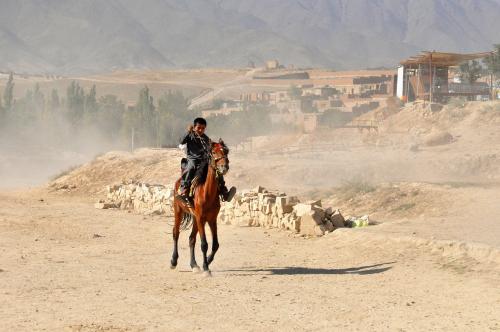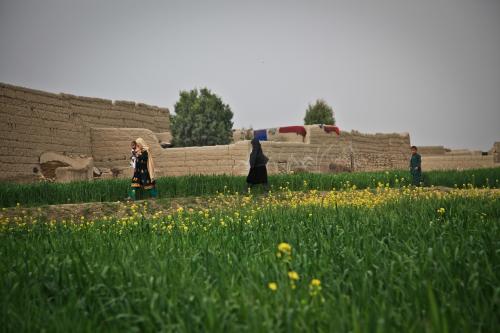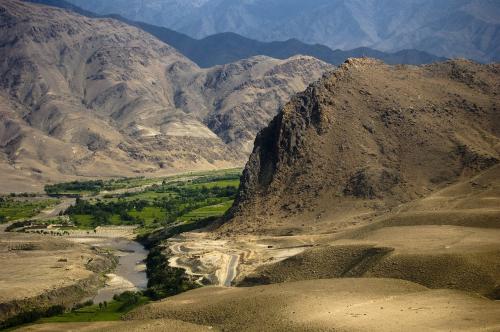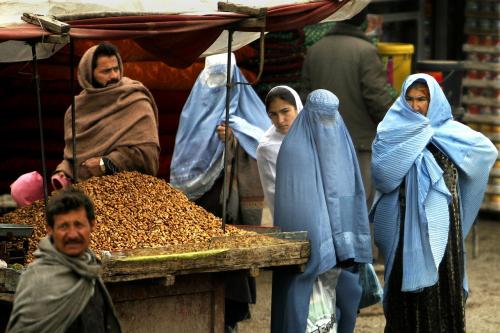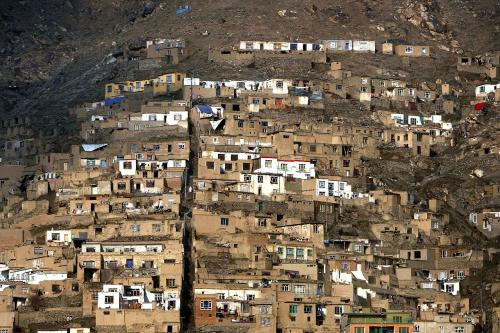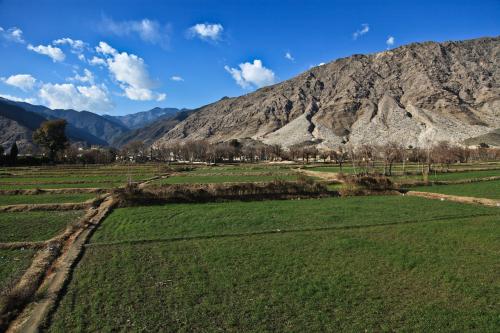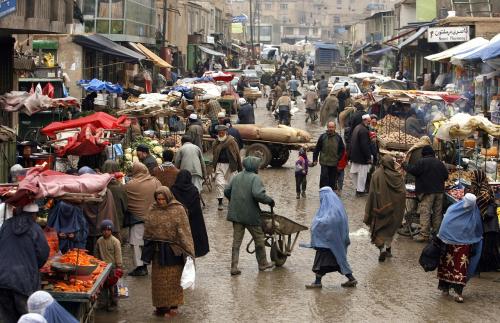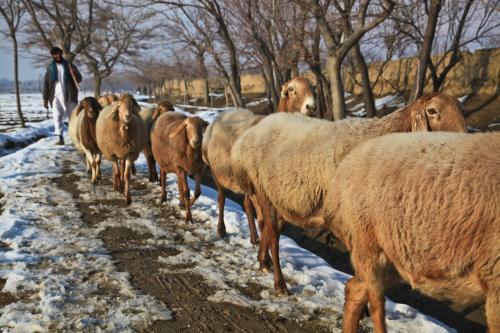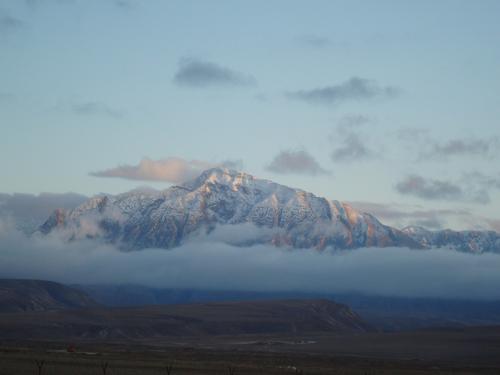Seasons in Afghanistan
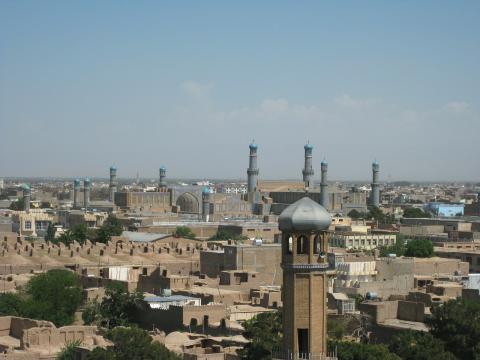
The country has subtropical continental climate with significant differences across its territory. Annual and daily temperature ranges are wide too. Kabul, the capital of Afghanistan is located on 1830 m a.s.l (6000 ft.a.s.l.) thus it has warm summers and cool winters with annual averages between 25 and -4 °C (77-25 °F). In Jalalabad (550 m; 1880 ft. a.s.l.) weather is almost subtropical with 30 °C (86 °F) at June and 2 °C at January (36 °F) with minimums at -20 °C (-4 °F). While in Kandahar (1070 m; 3500 ft. a.s.l.) climate is milder and more humid.
Annual amount of precipitation is about 370 to 400 mm (14.5-15.7”) and it falls mostly at winter and spring. Only south-western region of the country receives about 800 mm (31.4”) of annual precipitation due to Indian monsoon. Also there are occasional dust storms and strong cold northern winds at winter.
The country is currently at state of civil war thus any visit should be cautiously considered.
Seasons
Contents:
Spring in Afghanistan
In general spring is shirt and nice in Afghanistan. In terms of weather March is the rainiest and basically winter month while by the end of May true summer comes to the country. Spring averages are hovering around 22 °C (72 °F) however temperature depends on altitude. Southern regions are warmer. I.e. at May in Kandahar there is up to 33 °C (91 °F) while in Kabul only slightly higher than 20 °C (68 °F).
In general April and May are best time to visit the country. Summer heat hasn’t come, as well as dust storms. In addition water of lakes of southern region warmed up to 30 °F (86 °F) thus they are available for swimming. Spring precipitation often causes floods and mudflows.
Climate of the Spring Months
| March Max average t°: +12 °C (54 °F) Min average t°: 0 °C (33 °F) Precipitation: 88 mm (3.5") |
| April Max average t°: +18 °C (64 °F) Min average t°: +5.5 °C (42 °F) Precipitation: 80 mm (3.2") |
| May Max average t°: +23 °C (74 °F) Min average t°: +8 °C (47 °F) Precipitation: 26 mm (1.0") |
(Kabul)
Spring Holidays
Some public holidays i.e. ending of Ramadan or other memorial dates are being held according to local Islamic calendar. Relative dates in Georgian calendar are shifting by 11 or 13 days per year.
March 8 (Hoot 17) – International Women’s Day.
March 21 (Hamal 1) – Islamic New Year, Nowruz.
April 27 (Sawer 7) – Day of Saur Revolution.
May 1 (Sawer 11) The day of the worker's solidarity.
Summer in Afghanistan
Summer days in Afghanistan are hot and dry. Nights are warm too. In lower regions of the country nighttime temperatures are between 22 and 28 °C (72-82 °F). In locations above 3000 m (9850 ft.) a.s.l. temperatures are lower. At summer strong dry winds are rising. Their speed may reach 41 m/s (91 mph) and they drive dust and sand from Iran.
At July, the hottest month of a year, temperature may rise to 36-43 °C (97-109 °F) however August brings gradual cooling. At summer there’s hardly any precipitation at all and air is dry with only about 10% of humidity. At some years during “120 days of wind” there was no precipitation.
Climate of the Summer Months
| June Max average t°: +29 °C (85 °F) Min average t°: +12 °C (54 °F) Precipitation: 1 mm (0.03") |
| July Max average t°: +32 °C (89 °F) Min average t°: +15 °C (59 °F) Precipitation: 7 mm (0.28") |
| August Max average t°: +31.5 °C (89 °F) Min average t°: +14 °C (57 °F) Precipitation: 2 mm (0.07") |
(Kabul)
Summer Holidays
August 16 (Asad 28) – Independence Day in Afghanistan.
August 31 (Sonbula 9) – Pushtunization Day.
Autumn in Afghanistan
Autumn begins with slight cooling of air and increasing of humidity. However in Kandahar autumn is almost as hot as it was at summer. At November approach of winter is more obvious yet difference of temperatures between regions is still significant. In Kabul daily range of temperatures is between 2 and 14 °C (36-57 °F) while in southern territories daily maximum is about 20 °C (68 °F). In Mazar-i-Sharif temperature rises to 28 °C (82 °F).
Summer winds aren’t blowing at autumn thus humidity of air may reach 57%. Considering this November is one of the best months to visit the country.
Climate of the Autumn Months
| September Max average t°: +28 °C (82 °F) Min average t°: +10 °C (49 °F) Precipitation: 2 mm (0.07") |
| October Max average t°: +22 °C (71 °F) Min average t°: +4 °C (39 °F) Precipitation: 8 mm (0.3") |
| November Max average t°: +14.5 °C (58 °F) Min average t°: -1 °C (31 °F) Precipitation: 18 mm (0.7") |
(Kabul)
Winter in Afghanistan
Winter in southern portion of the country is milder while in northern parts it is cold with piercing winds blowing along valleys and severe frosts in highland kishlaks. Mountains are covering two-thirds of the country. Kabul is chilly too however temperature here goes down to 5 °C (41 °F) only at night. Days are warmer and sunny. At winter precipitation is at its peak. It falls as snow often blocking mountain passes.
Mazar-i-Sharif remains warm with its 12 to 28 °C (54-82 °F) range of winter averages. Most of time temperature in this northern city hovers around 23 °C (73 °F).
Climate of the Winter Months
| December Max average t°: +8 °C (46 °F) Min average t°: -5 °C (23 °F) Precipitation: 30 mm (1.2") |
| January Max average t°: +3 °C (38 °F) Min average t°: -9 °C (16 °F) Precipitation: 40 mm (1.6") |
| February Max average t°: +5 °C (42 °F) Min average t°: -6 °C (21 °F) Precipitation: 60 mm (2.4") |
(Kabul)
Winter Holidays
December 27 (Jadi 6) – Day of second stage of Saur Revolution.
January 1 (Jadi 11) – Day of foundation of PDPA.
January 7 (Jadi 17) ‑ Birthday of the Prophet Muhammad, Mawrid.
 Seasons of the Year
Seasons of the Year 
